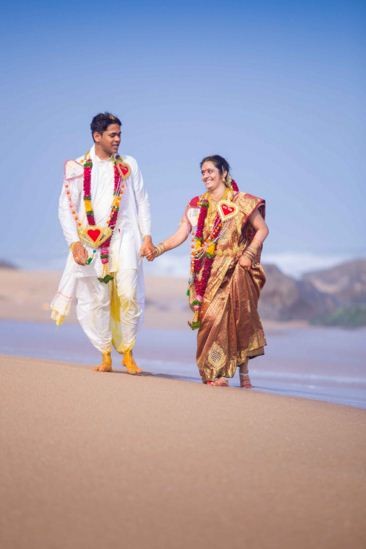Among the different types are the common Dashiki, Animal print, embroidered cotton and Zambian java. These materials can make a fashion statement depending on how they are worn and the type of designs.
Today, outfits made from Zambian java have become trendy in the region. Several Southern African countries are importing the textile vastly from Lusaka, Zambia, and Tanzania to make different stylish outfits and shoes.
“Although we sell different African materials nationally, many people are rushing for Zambian java and at the moment it has the highest number of sales compared to other textiles. Many designers, tailors and individuals are coming for the textile,” said Fungai Feremenga, a fabric merchandiser from Harare.
“The Zambian java is being sold out together with another material called super wax which is an import from Italy. The two fabrics are being used together as the designers are blending the plain super wax with different Zambian java designs.
Zambian java is a material that comes with similar designs to Dashik but the only difference between the two is that Zambian java has a silky shiny texture which lure stylists.
One of the local tailors specialising in Africa attires, Delight Musarurwa, told The Southern Times that many of her clients are in love with the trendy pencil s********ts, female blazers and male shirts from the material.
“Zambian java is mainly common on female blazers which have become trendy among people who wear formal and casual outfits. Young ladies are desisting from the behaviour of buying South Africa imported female blazers that are being sold in local boutiques and favouring tailor-made Zambian java blazers,” said Musarurwa.
“The blazers are fashionable and instead of wearing them with formal blouses or chiffon tops like those people wear with SA imports, the Zambian java blazers are worn with bandage sleeveless tops which have plain colours.
“Some people want to wear the blazers with tailor made slacks or pencil shirts which also have a plain colour. I normally make the slacks and plain s********ts from super wax material or even a stretch material and cotton lawn fabric.”
She said her male clients are rushing for the trendy Zambian java short sleeved shirts which can be worn with formal trousers and sometimes jeans.
“The short sleeved Zambia java shirts can be made entirely from the textile or it can have a design of both Zambian java and cotton lawn fabric. Such shirts look more appropriate if they are worn with trendy male pants that have bright colours,” added Musarurwa.
“When it comes to formal, there are long sleeved shirts made from cotton material which are made stylish with strips of Zambian java materials on the button holes, collar and chest pocket. Some designs can have the shirts with a cotton material and patches of Zambian java materials on the elbows wrist,” added Musarurwa.
In Zambia many people are wearing trendy pretty dresses made from Zambian java while others are wearing thick belts from the material on plain dresses.
According to Lusaka fashion bloggers, it is fashionable for young women to wear Zambian java dress tops with trendy plain leggings or jeggings.
One of Zambian java regional merchandisers, Chipasha Mwanza, said her clients from South Africa were using Zambian java to make thick fashion belts that can be worn by classy dresses.
“My SA based clients are wearing their Zambian java on fashionable dresses that are plain and simple but, at the same time characterised by two or three buckles to accommodate the thick belts,” said Mwanza who is based in Zambia.
“Some of the belts are being worn on trendy ‘bum shorts’ and ‘khaki capris’ for different outings. I have seen many pictures of some of my clients’ outfits from the textile on Instagram and they are amazing.”
She said some Angolan fashion designers who buy from her were even making stylish wages with wooden heels.
On the other hand, there is another material from Mozambique which has the same effect and also has similarities with Zambian java but, the Mozambican call the material kapulana.
Kapulana is a captivating fabric which mostly boasts of bright hues and oriental patterns. The material is quite common in Southern African region and is currently being used for trendy outfits even though in its native country it represents a tradition.
In some parts of Mozambique, women wrap the kapulana as they will be doing their house chores and sometimes use them to carry babies on their back. Others use the textile for decorating their houses.
According to a Mozambican designer, Martinho Cossa, young people in his country are making the kapulana cool as they are now wearing vests and other modern designs with the material.
Cossa was quoted by a regional fashion magazine saying, “The material is very cool and so far many young people are coming with different designs of vests, summer shirts for males and ‘skippy s********ts’ for the ladies.”Read more at:green prom dresses | grey prom dresses
 Michael Kors' secret to success
Michael Kors' secret to success Edeline Lee AW16 presentation at London Fashion Week
Edeline Lee AW16 presentation at London Fashion Week Leanne Marshall's FW16 Collection At NYFW
Leanne Marshall's FW16 Collection At NYFW Discover the fabric of the Octagon Theatre at a special exhibition of costumes
Discover the fabric of the Octagon Theatre at a special exhibition of costumes Costume Designer Patricia Field ********s About Closing Her Namesake Store
Costume Designer Patricia Field ********s About Closing Her Namesake Store Bridal Extravaganza at Label 24
Bridal Extravaganza at Label 24 Sadhana: a style star fades away
Sadhana: a style star fades away Cinematic Weddings Offers Custom Cinematography Services in India :
Cinematic Weddings Offers Custom Cinematography Services in India :